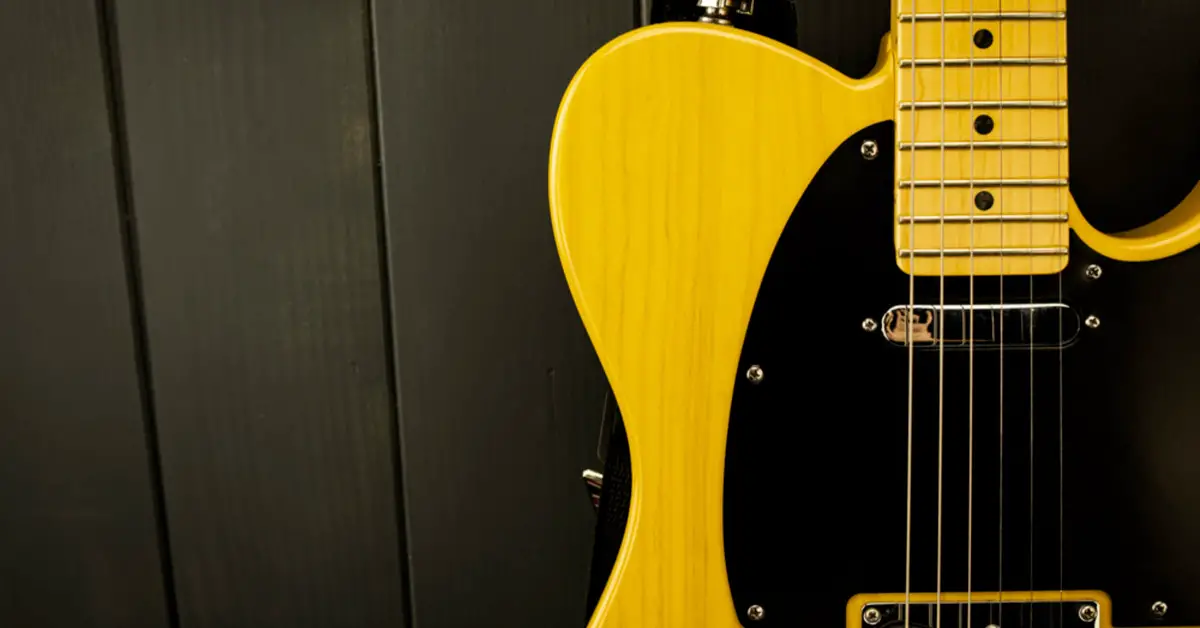One of the most famous guitar brands that built a name for itself and defined the standard for electric guitars is Fender. Since its introduction in the 1950s, the Stratocaster and Telecaster were two of their most popular products.
Due to their capacity to flawlessly complement all musical genres, these electric guitars have gained worldwide recognition among both amateur and well-known artists.
Although all of Fender’s electric guitar models are without a doubt of outstanding quality on their own, there are still a few apparent variations between the Stratocaster and Telecaster that would be useful to know in choosing the model that’s best for you.
Brief History
The Fender Telecaster, which was the first commercially successful solid-bodied electric guitar released by Fender, was introduced in 1951 by its founder, Leo Fender. Since rock and roll were gradually gaining popularity at this time, Fender began making strong electric guitars and amplifiers that could deliver greater volume and improved projection.
Telecasters became more well-known as a result of the influence of well-known performers from many musical genres and artists who have changed the course of music since the 1960s. Legendary country music performers like Luther Perkins and Buck Owens, as well as rock musicians Keith Richards, Jimmy Page, and George Harrison, were among the prominent musicians who used the Telecaster.
Years after the successful debut of the Telecaster, Fender decided to make alterations to the model’s design and improve its appearance and structure. Little did they know that it would lead to the creation of the Stratocaster.
Initially, Fender only planned to modify the Telecaster’s design. However, they concluded that instead of the Telecaster being relaunched with a more appealing design, it would be far better to release this new and improved design as a separate model of its own — hence, the Stratocaster emerged as an electric guitar that largely contains most of the components of the Telecaster. In this improved version, Fender introduced a new feature to the Stratocaster that distinguishes it from the older models called precision bass. The Stratocaster was a more prominent model featuring a contoured body shape, a new bridge, and three pickups with switching and controls to increase its tonal versatility.
The Stratocaster debuted in 1954, and one of the key moments that sparked its fame was Buddy Holly’s rendition of the song “One” on Ed Sullivan’s show in 1957. In the 1960s, legendary musicians like Jimi Hendrix, David Gilmour, Eric Clapton, and Robin Trower helped make the Stratocaster a well-known model.
Outstandingly, both the Fender Telecaster and Stratocaster remained unchanged since their release, and their fame continues to skyrocket even today.
Difference Between Fender Telecasters and Stratocasters
Neck
Both the Telecaster and the Stratocaster have bolt-on necks, 22 frets, a scale length of 25.5 inches, similar nut widths, and a fretboard radius that measures 9.5 inches.
However, their headstock sizes would clearly distinguish them from one another. The headstock of the Stratocaster is significantly bigger than that of the Telecaster. This is true for modern, classic Stratocaster models and bulky variants that were introduced between 1965 and 1981. Some experts claim that the larger headstock on Stratocasters helps them create more sustain and tone.
Body
Alder, a light, closed-pore wood that resonates well and provides a balanced tone that bestows great sustain and crisp sounds, is the primary material used in the bodies of both Telecasters and Stratocasters. Ash and mahogany are two additional types of wood that they use for their tonewood.
One obvious distinction between the Stratocaster and Telecaster is their different body types. There is only a single cutaway on the Telecaster with no body contour, and its rounded shape makes playing it comfortable.
Contrarily, Stratocasters have a double cutaway body that makes it easy to reach the instrument’s high notes.
Electronics
Both Telecasters and Stratocasters have a master volume control, with their electronics being essentially the same. While Stratocasters have specific knobs for both their middle and bridge pickups, Telecasters only have a single-tone control.
Another noticeable distinction between the two electric guitars has something to do with switching. Telecasters have a three-way switch.
Although Fender updated the Stratocaster with a standard five-way selector, players still favor the instrument’s original three-way switch because it provides more tonal diversity between its first and second positions and second and third positions.
For louder and more powerful tones, Telecasters also use two single-coil pickups, a bigger and longer bridge pickup, and a mounted metal bridge plate.
Hardware
The bridges of the Telecaster and Stratocaster are distinctive in terms of hardware. With the exception of older modeled Telecasters – which have only three saddles, both instruments’ newer models have six adjustable saddles, but Telecasters house the bridge pick-up.
Contrarily, Stratocasters include a two-point tremolo system with a bridge coupled to springs that allows the user to utilize a whammy bar to change the pitch of the strings.
Which Is Better Stratocasters Or Telecasters?
One of the most reliable and top-performing electric guitars on the market today is the Fender Stratocaster and Telecaster. Both have helped raise the standard for guitars in terms of the sounds they generate, including their appearance. New manufacturers constantly compare and imitate their products to both Fender electric guitars.
Telecasters excel in terms of sound versatility and are suitable for a wide range of musical genres, including country, blues, rock, and genres that call for certain tones. Contrarily, Stratocasters are comfortable, playable, and perfect for music styles including rock, hard rock, and heavy metal that call for stronger tones.
Both electric guitars are adaptive and convenient to use but they differ in complementing specific musical genres and styles. In the end, it all comes down to personal preference, which is why it is highly advisable to consider the genre you intend to play and to personally test the guitar before purchasing it. Either way, both the Telecaster and Stratocaster will surely give you your money’s worth.


